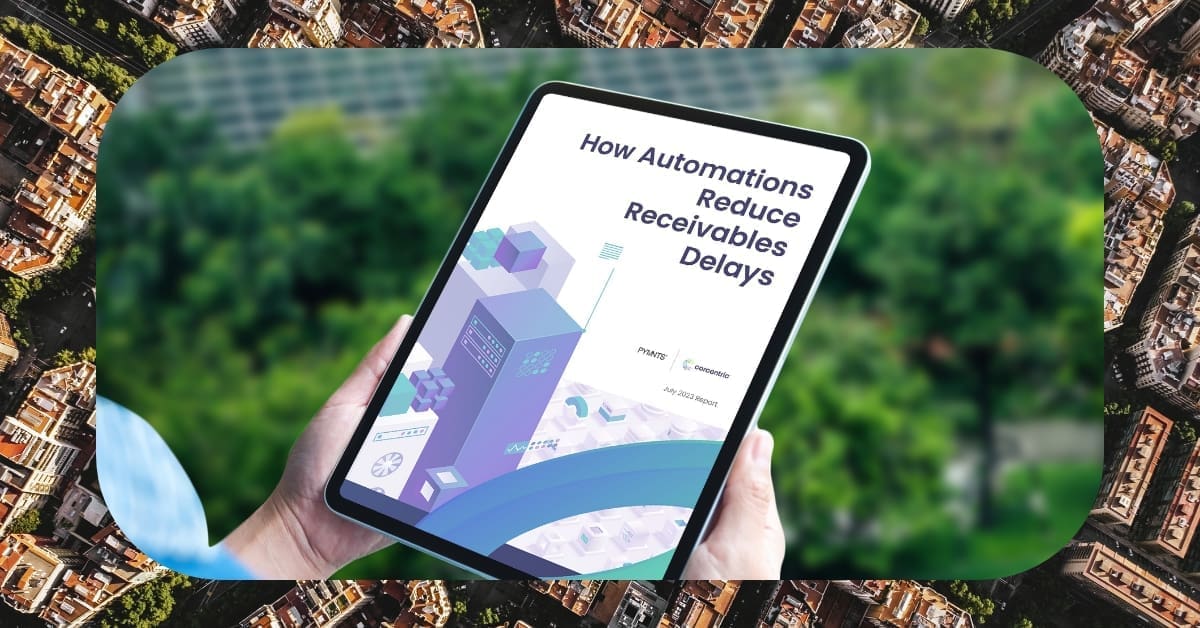Optimizing Order To Cash With Advanced Automation Solutions: A Cfo’s Guide
Corcentric

CFO CONCERNS
Imagine manual order-to-cash (OTC) system that?s riddled with inefficiencies and has enormous operational costs?the kind of system that is much too complex for todays dynamic customer-driven world. This is the problem offering CFO major headache. The challenge is figuring out how to best optimize current operations and processes to improve revenue, customer satisfaction, and sustainability.
Fortunately, automation provides an answer to this common problem. By replacing manual, labor-intensive processes with automated end-to-end solutions, companies can streamline the order-to-cash process and create better customer experience. This guide provides an overview of the key OTC automation features and functions to help CFOs evaluate their current OTC process and identify areas where automation can improve efficiency, reduce costs, and maximize customer satisfaction.
Understanding the Order to Cash Process
At its core, the OTC process involves customer ordering items or services, supplier or manufacturer producing and delivering the product, sales teams processing the order, and finance teams processing invoices. This system is essential for customer service and success, as it optimizes efficiency and increases customer retention. When managed properly, it is an invaluable tool for success and stability.
When an issue arises or problem occurs, it can cause serious financial setbacks for company. Because of this, it is essential for CFOs to constantly evaluate the OTC process and look for ways to make it more efficient. Automation is one of the most effective tools that can help achieve this goal. By leveraging automated solutions, CFOs can optimize the OTC process, reduce costs, and improve customer satisfaction.
Benefits of Automating OTC
The main benefit of automating the OTC process is improved efficiency. Automation eliminates the manual data entry associated with manual OTC processes and enables companies to process and fulfill orders faster. Automation also reduces human errors, which can result in more accurate and higher-quality customer service. Automation further improves the customer experience by providing customers with more transparent and traceable order tracking capabilities.
Automation also increases efficiency. Automation can streamline the process by eliminating unnecessary steps, freeing up resources to complete tasks more quickly and accurately. Additionally, automated OTC solutions can enable companies to access and process data from multiple systems quickly and accurately, enabling better decisions about orders, customers, and delivery methods.
Finally, automation can reduce costs. Automation eliminates the labor costs associated with manual OTC processes, freeing up resources to allocate to other areas. Additionally, automation allows organizations to identify and address most problems before they become serious financial issues, including customer disputes, incorrect invoices, and late payments.
Key Automation Features to Examine
When evaluating automation solutions, it is important for CFOs to understand the features and functions offered by the software. The following are key features to look for that can help CFOs optimize the OTC process:
Order Processing: The ability to easily process orders is essential to any OTC process. Automation can streamline the process by consolidating the data from multiple systems, such as customer relationship management (CRM) and enterprise resource planning (ERP) systems, into single system. This allows CFOs to identify and address issues more quickly.
Invoicing and Payment Processing: Automated OTC solutions can streamline the invoicing process by automatically generating invoices and sending them to customers on predetermined schedule. Automation can also assist with payment processing by automatically reconciling customer payments with invoices and alerting CFOs of any discrepancies.
Customer Service: Automation can significantly improve the customer service experience. Automated OTC solutions can provide customers with real-time order tracking, allow customers to pay their invoices online, and alert customers of any changes or delays to orders. This helps reduce customer frustration and increase customer satisfaction.
Analytics and Reporting: Automation can also provide CFOs with real-time analytics and reporting tools that enable them to better understand customer behaviors and trends, identify any issues in the OTC process, and make more informed decisions about customer service.
Conclusion
Automation provides financial executives with an effective solution for optimizing their order-to-cash process and maximizing customer satisfaction. Automation eliminates manual data entry, increases efficiency, and reduces costs, allowing CFOs to quickly identify and address issues, such as customer disputes and late payments. By leveraging automated solutions, CFOs can better understand customer behaviors, make more informed decisions, and improve customer service.

